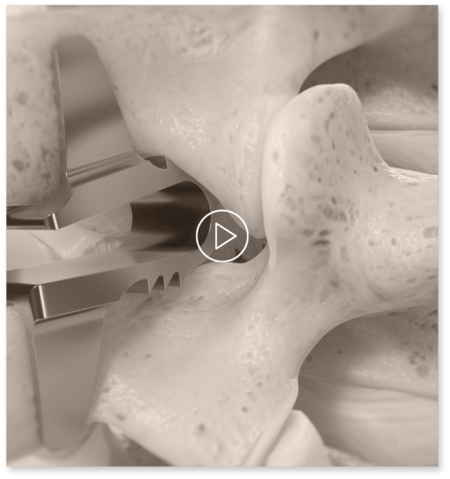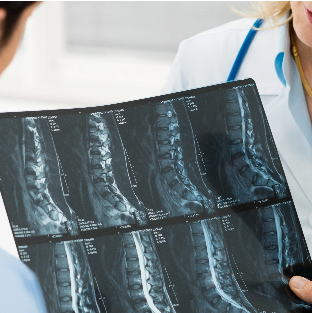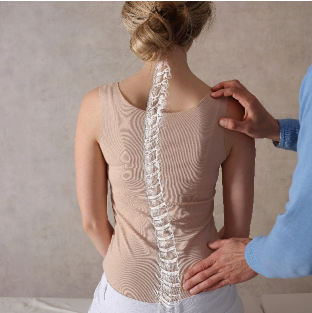
Dr. Jeremy Smith, M.D., is a highly sought-after spinal surgeon in Orange County, California, with years of dedicated practice and service to his patients. He is also the Division Chief of Spine Surgery, Fellowship Director and Chief of Staff of the Hoag Orthopaedic Spine Institute. Patients suffering from a wide range of spinal conditions come to Dr. Jeremy Smith for guidance on how to find the best approach to their treatment options and a road to a pain-free future.
Anterior Cervical Discectomy is a type of surgery where a damaged disc is removed; it is also called Anterior Cervical Decompression. Decompression refers to the surgical removal or repositioning of a structure that presses down on another structure. When a damaged disc is putting pressure on the spinal cord (or the nerve root) it can cause weakness, numbness, tingling and pain. After treating the nerve root or spinal cord compression, an inter-vertebral fusion (the permanent locking of multiple vertebrae together) will be necessary to stabilize the spine.
An anterior lumbar interbody fusion surgery locks multiple vertebrae together in the lower back portion of the spine. This is done in order to eliminate pain, remove pressure on the nerves, and to correct the alignment of the spine. This surgery is performed through the front of the belly in order to reduce risk, while removing a disc from the spine.
Extreme Lateral Interbody Fusion (XLIF) is a minimally invasive surgery that is used to treat some lumbar conditions that require the fusion of the lumbar spine. A surgeon must access the intervertebral disc space and the lumbar spine (low back) in order to approach the spinal fusion.
During this procedure, surgery is performed through the side of the body in order to improve long-term back or leg pain. Steroid injections, physical therapy and pain medications are alternative forms of treatment utilized before performing Extreme Lateral Interbody Fusion (XLIF).

Lower back pain that results from degenerative spinal disorders, such as osteoarthritis, can be addressed by applying the common spinal fusion technique, Posterior Lumbar Spinal Fusion. A spinal fusion can be done in any area of the spine, including the cervical, lumbar and thoracic regions, and the surgical approach can be through a small incision from the back (posterior approach). This surgery is designed to fuse segments of the vertebral spine together, so that the individual vertebrae cease from causing pain to the patient. Advances in technology allow for this procedure to minimize tissue damage and blood loss, as the surgery requires small incisions, and the hardware is placed through image-guided navigation techniques.
In instances where the thoracic spine has been injured, a posterior thoracic spinal fusion may be necessary. During this surgery, segments of the thoracic vertebral spine are fused together to stabilize the area, so that the injury can heal properly.
Lorem ipsum dolor sit amet, consectetur adipiscing elit, sed do eiusmod tempor incididunt ut labore et dolore magna aliqua. Ut enim ad minim veniam, quis nostrud exercitation ullamco laboris nisi ut aliquip ex ea commodo consequat. Duis aute irure dolor in reprehenderit in voluptate velit esse cillum dolore eu fugiat nulla pariatur. Excepteur sint occaecat cupidatat non proident, sunt in culpaest laborum.
Lorem ipsum dolor sit amet, consectetur adipiscing elit, sed do eiusmod tempor incididunt ut labore et dolore magna aliqua. Ut enim ad minim veniam, quis nostrud exercitation ullamco laboris nisi ut aliquip ex ea commodo consequat. Duis aute irure dolor in reprehenderit in voluptate velit esse cillum dolore eu fugiat nulla pariatur.

Transforaminal Lumbar Interbody Fusion is a spinal fusion surgery that is typically used to remove a degenerative disc. A degenerative disc can put pressure on the nerve roots in the lumbar spine, which in turn causes pain in the back and legs. During this procedure, the vertebrae are fused together in order to stabilize the spine. This surgery can correct a number of conditions including: disc herniation, degenerative disc disease, and spondylolisthesis.

Coflex is a titanium alloy device that is inserted into the spine in order to preserve lumbar motion and to provide support to the spine. Coflex surgery is a neurological procedure wherein the Coflex Interlaminar Stabilization device is implanted. This motion-preserving and minimally invasive procedure is often used in treating patients with spinal stenosis, who have developed bone spurs or experience wear and tear in the spine due to aging.





